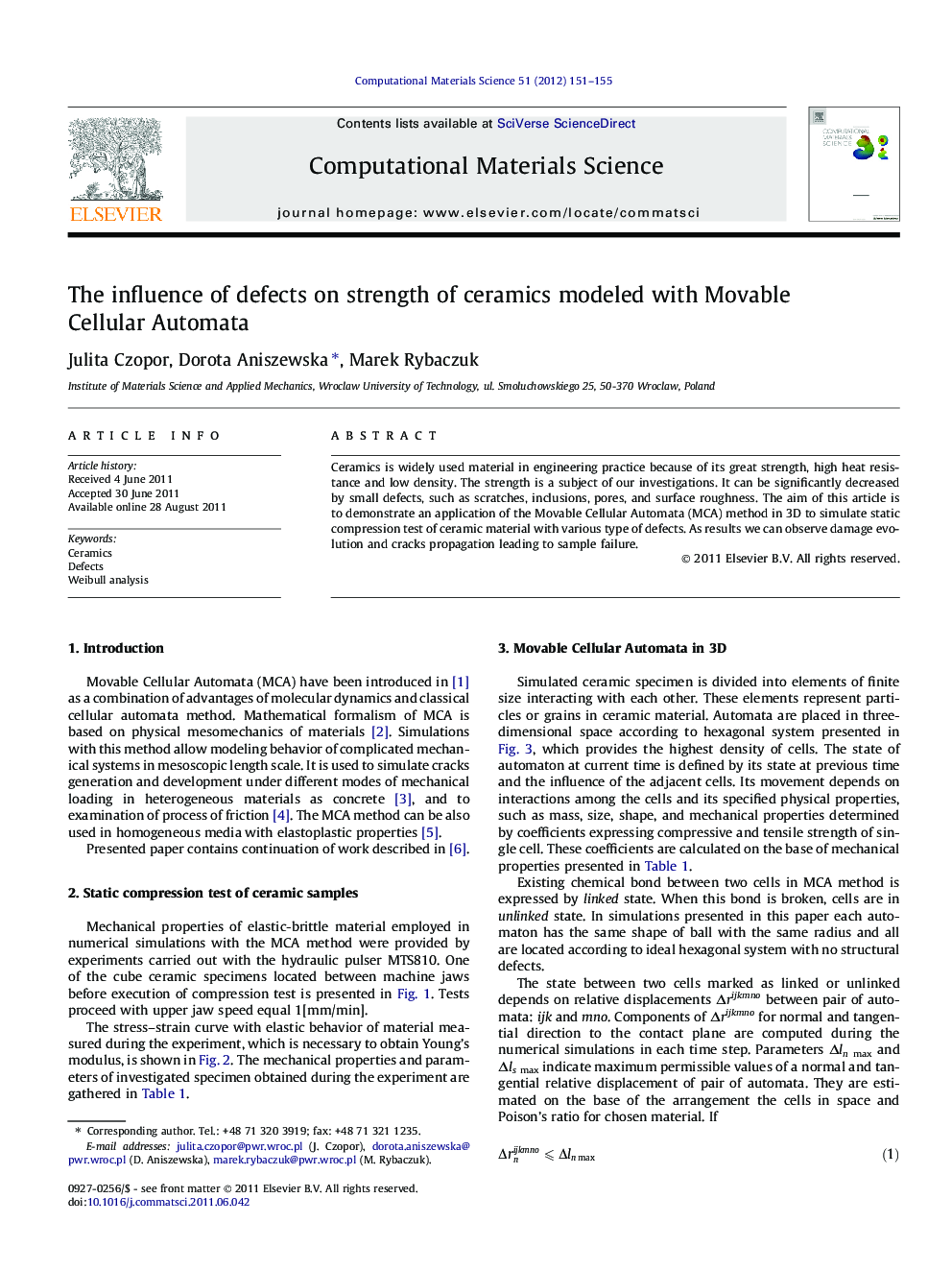| Article ID | Journal | Published Year | Pages | File Type |
|---|---|---|---|---|
| 1561822 | Computational Materials Science | 2012 | 5 Pages |
Ceramics is widely used material in engineering practice because of its great strength, high heat resistance and low density. The strength is a subject of our investigations. It can be significantly decreased by small defects, such as scratches, inclusions, pores, and surface roughness. The aim of this article is to demonstrate an application of the Movable Cellular Automata (MCA) method in 3D to simulate static compression test of ceramic material with various type of defects. As results we can observe damage evolution and cracks propagation leading to sample failure.
► We define interactions among automata in The Movable Cellular Automata method. ► The MCA method in our approach is based on the classical Newton–Euler dynamics. ► Various types of material defects are applied in numerical simulations. ► Weibull analysis indicates influence of these defects on material strength.
